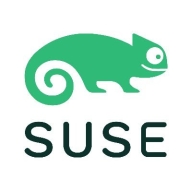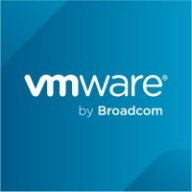


VMware Aria Automation and SUSE Manager compete in infrastructure automation and management. VMware Aria Automation has the upper hand for its pricing and support structure, whereas SUSE Manager is recognized for its feature richness.
Features: VMware Aria Automation offers robust automation capabilities, integration with various cloud services, and comprehensive lifecycle management. SUSE Manager provides extensive support for multiple Linux distributions, flexible deployment options, and enhanced security features.
Room for Improvement: VMware Aria Automation could improve its reporting tools, configuration options, and user experience. SUSE Manager needs better scalability, simplified patch management, and also has user experience issues that need addressing.
Ease of Deployment and Customer Service: VMware Aria Automation is praised for smoother deployment and accessible customer service. SUSE Manager's deployment process is structured but seen as complex, with customer service being harder to reach.
Pricing and ROI: VMware Aria Automation provides better initial setup costs and quicker ROI. SUSE Manager, though having higher setup costs, is valuable for organizations needing its specific features.
Everything we've gained from it makes my job easier day after day, and I see value in it as an engineer.
Microsoft Intune not only saves costs by reducing the number of personnel needed but also offers a comprehensive solution for managing laptops, applications, security, individual access, and enrollment.
Importantly, when someone leaves the company, it helps protect document access on their devices.
When a support ticket is submitted, it directly reaches someone with Intune support expertise.
When I contacted Microsoft, they had the same expertise, if not more, which is phenomenal because I felt heard and my problem was solved.
Sometimes, the support provided is excellent, and the representative is knowledgeable, while other times, the service needs improvement.
Generally, the support is good, but there are instances where the support team seems disinterested in solving complex problems.
We never had major issues to report or request support.
The scalability of Microsoft Intune is ten out of ten.
Ideally, we want to automatically segregate devices based on user properties like primary use, but currently, dynamic groups seem limited to device properties.
It supports organizations with 200 endpoints and those with more than 15,000 endpoints.
We have not experienced downtime, bugs, or glitches.
It appears Microsoft Intune undergoes changes without informing customers.
Microsoft Intune has been very stable.
The stability of SUSE Manager is fine.
Features like unlocking devices sometimes fail, and the support offered for other operating systems is insufficient.
There are communication issues, so you might start working with a feature without knowing if it will be deprecated six months from now.
Many third-party companies offer single-pane-of-glass reporting that shows you what your update environment looks like, how your patch is doing, application status, etc., but Intune's reporting is not intuitive.
A better description of the initial setup process could enhance user experience.
Features that can be helpful in disaster recovery.
From an integration perspective, it is difficult to integrate with Jira or any ticketing tool, which is challenging.
It operates for both of my products, however, as a product, it is complicated to integrate and automate with other products.
Introductory professional services, like a fast-track service, were included with our E5 membership, and there have been no additional costs.
The Intune suite and add-ons, such as batch management and remote help, are costly.
It costs approximately forty euros per user per month.
Intune excels in configuration and compliance management for Windows 10, ensuring devices receive timely updates and adhere to organizational standards.
Dynamic groups allow us to set conditions for automatic membership, eliminating the need for user intervention or manual review and ensuring a seamless workflow.
Windows Autopatch is the most valuable because it removes the burden of patch management.
It supports more than six or seven Linux flavors, and when compared to other tools such as Satellite, which only supports the Red Hat operating system, SUSE Manager supports Red Hat, Ubuntu, Debian, and some other Linux operating systems for patch management.
SUSE Manager is valuable for managing systems, patching, and utilizing SaltStack connectivity for various installations and other routines.
It helps us automate the workflow of creating many VMs and the TensorFlow key method.
We have strong regulations for maintaining compliance and mitigating risks with this product.
| Product | Market Share (%) |
|---|---|
| Microsoft Intune | 9.4% |
| VMware Aria Automation | 5.4% |
| SUSE Manager | 3.3% |
| Other | 81.9% |



| Company Size | Count |
|---|---|
| Small Business | 116 |
| Midsize Enterprise | 46 |
| Large Enterprise | 152 |
| Company Size | Count |
|---|---|
| Small Business | 6 |
| Midsize Enterprise | 1 |
| Large Enterprise | 2 |
| Company Size | Count |
|---|---|
| Small Business | 32 |
| Midsize Enterprise | 24 |
| Large Enterprise | 130 |
Microsoft Intune provides centralized management of mobile devices and applications, ensuring security, compliance, and productivity through integration with Microsoft services like Microsoft 365 and Azure Active Directory.
Organizations use Intune for managing mobile devices and applications, enhancing security and compliance across platforms. With features like single sign-on, conditional access, and zero-touch deployment via Autopilot, it facilitates efficient operations. Intune's scalability, easy enrollment, and capabilities such as remote wipe support diverse device management, offering robust data protection and efficient operation. Despite its features, improvement areas include reporting, compatibility with non-Microsoft devices, and better support for macOS and Linux devices.
What are the key features of Microsoft Intune?
What benefits should users look for in reviews?
In industries such as finance, healthcare, and education, Microsoft Intune is implemented to ensure secure and compliant device management. Companies leverage its capabilities to deploy security policies and manage both corporate-owned and BYOD environments, facilitating a unified approach to data protection and compliance.
SUSE Manager was designed to help your enterprise DevOps and IT Operations teams reduce complexity and regain control of your IT assets with a single tool to manage Linux systems across a variety of hardware architectures, hypervisors as well as container, IoT and cloud platforms. It automates Linux server and IoT device provisioning, patching and configuration for faster, consistent and repeatable server deployment helping to optimize operations and reduce costs. And with automated monitoring, tracking, auditing and reporting of your systems, VMs, and containers across your development, test and production environments, you can ensure compliance with internal security policies and external regulations.
VMware Aria Automation is a cloud management tool that allows companies to simplify their cloud experience through a modern automation platform. The solution is designed to deliver self-service clouds, multi-cloud automation with governance, and DevOps-based security and infrastructure management. It helps organizations improve IT agility, efficiency, and productivity through its various features.
VMware Aria Automation has multiple use cases that include the following:
VMware Aria Automation Features
VMware Aria Automation has various features that allow users to easily perform operations. Some of the solution's capacities include:
VMware Aria Automation Benefits
VMware Aria Automation offers its users various benefits. Some of the biggest advantages that the solution brings to companies that utilize it include:
Reviews from Real Users
Awais J., CTO/CEO at a tech services company, likes VMware Aria Automation because it saves a lot of time, provides more visibility, and has extensive automation capabilities.
An IT consultant at a government rates VMware Aria Automation highly because the product gives you flexibility to analyze and consume resources.
We monitor all Configuration Management reviews to prevent fraudulent reviews and keep review quality high. We do not post reviews by company employees or direct competitors. We validate each review for authenticity via cross-reference with LinkedIn, and personal follow-up with the reviewer when necessary.